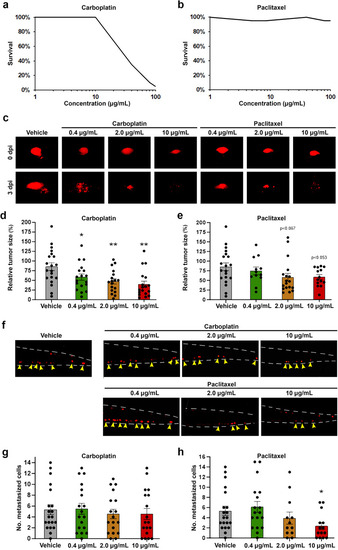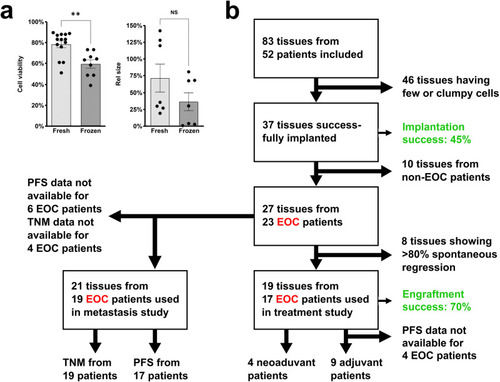- Title
-
Zebrafish tumour xenograft models: a prognostic approach to epithelial ovarian cancer
- Authors
- Lindahl, G., Fjellander, S., Selvaraj, K., Vildeval, M., Ali, Z., Almter, R., Erkstam, A., Rodriguez, G.V., Abrahamsson, A., Kersley, Å.R., Fahlgren, A., Kjølhede, P., Linder, S., Dabrosin, C., Jensen, L.
- Source
- Full text @ NPJ Precis Oncol
|
Carboplatin and paclitaxel demonstrate concentration-dependent safety and anti-cancer efficacy in IGROV-1 EOC models. |
|
Inclusion and exclusion criteria and handling of patient samples in the clinical study. |
|
Implantation of EOC ZTX models in zebrafish larvae. |
|
Dissemination of tumour cells as a tool for prediction of outcome. |
|
Treatment outcome in ZTX models is associated with PFS in the corresponding patients. |
|
Carboplatin and paclitaxel do not inhibit metastasis in patient-derived ZTX models of EOC. |






